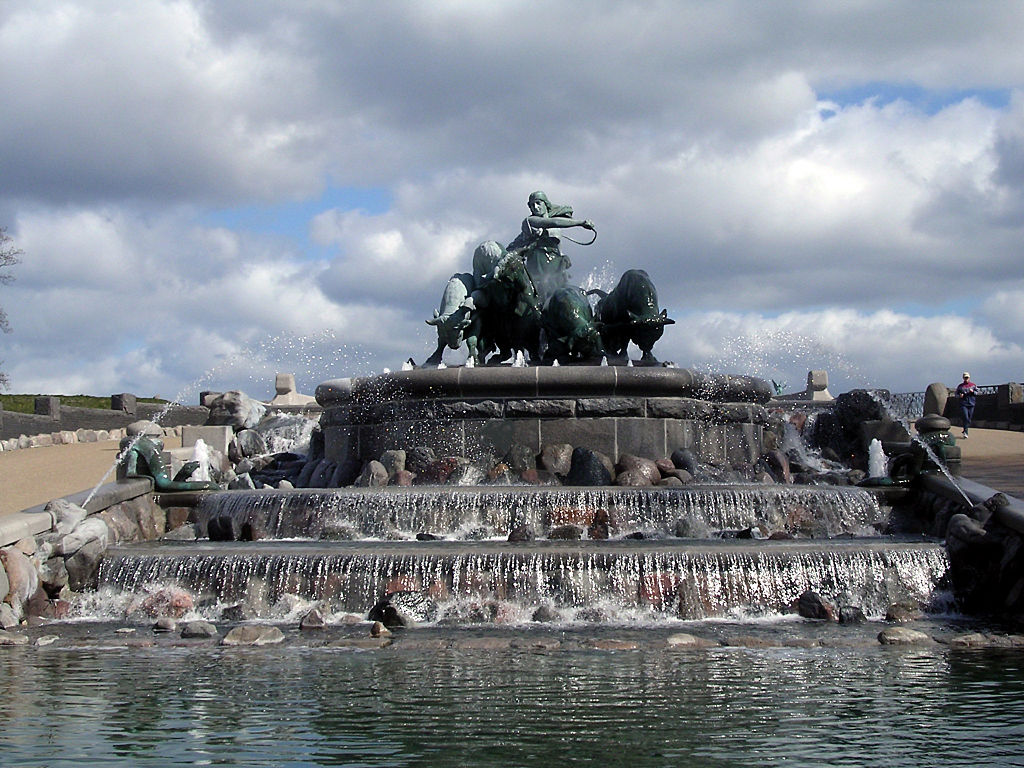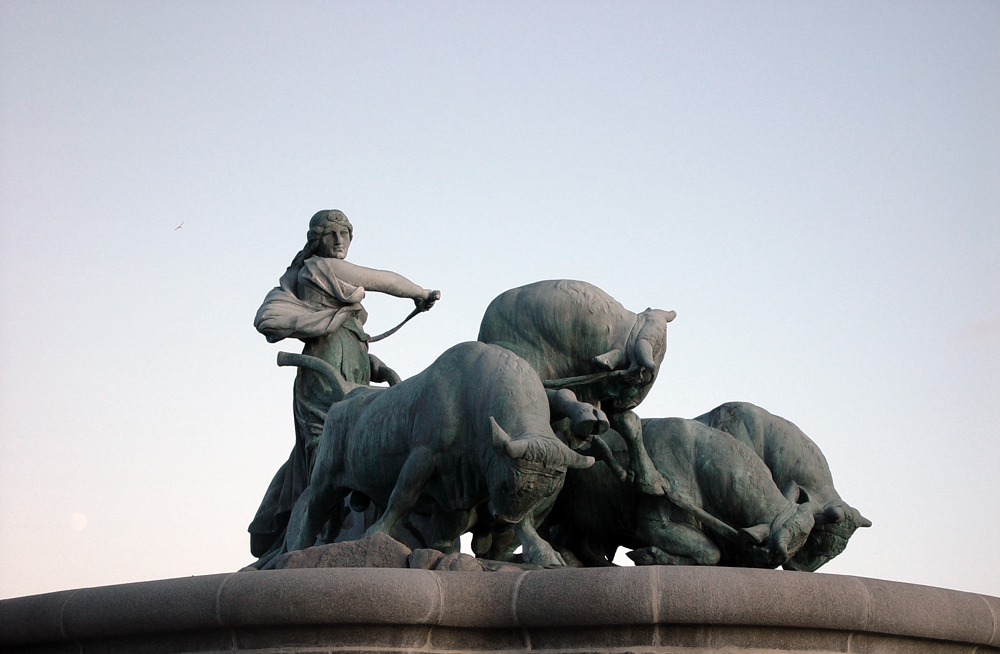Gefjun, also called Gefion, Gefn, or Gefjon, is an Ásynjur goddess of agriculture in Norse mythology and is also referenced as an earth goddess.
Unlike other pagan religions, Norse Mythology didn’t assign specific gods and goddesses strict roles. While Gefjun was a goddess over the earth, so was Freyja, Frigg, Nerthus, Fjorgyn, Jord, and Sif.
So, what is it about the goddess Gefjun that differentiates her between the other Norse gods and goddesses?
Gefjun is referenced as the goddess of agriculture, but she is more closely related to plowing. As detailed by Snorri Sturluson in the Prose Edda (in the Gylfaginning), Gefjun and her four oxen sons are responsible for plowing what is now known as lake Mälaren and the Danish island of Zealand.
Let’s take a closer look into who Gefjun is and the ever-growing controversy that surrounds her among Nordic scholars.

Gefjun: A Goddess of Many Names
Gefjun goes by many names, and the etymology of her name is a hot topic among modern Germanic scholars. She is referenced as Gefjun, Gefion, Gefn, or Gefjon.
The contemporary interpretation of the suffix ‘Gef’ means ‘giver of prosperity or the giving one. This interpretation makes sense since Gefjun is a goddess of agriculture. However, the suffix Gef is also another name used to describe Freyja.
Some scholars suggest that when Gefjun is mentioned in the Poetic Edda, she is often mistaken for the goddess Freyja. In the Lokasenna, Loki accuses Gefjun of trading precious jewels for sex, which Freyja is accused of doing in a 14th-century poem, the Sörla þáttr.
Either modern translations mistake Gefjun for Freyja in the Lokasenna, or the two committed suspiciously similar crimes.
What is the story of Gefjun?
Gefjun’s claim to fame was the story of her encounter with king Gylfi. This tale is found in Snorri Sturluson’s Prose Edda and the Heimskringla. The classic tale started when Odin sent Gefjun to look for new lands.
When she arrived in the Swedish king Gylfi’s territory, he gave her land to plow. Unable to do it herself, she made a quick pitstop in Jotunheim to give birth to four sons that she transformed into oxen. (Mother of the year?)
With her oxen sons and a plow, she moved the land into the ocean and turned it into moderns Zealand, Denmark. The hole she left behind in the ground is now Lake Mälaren (in Sweden). After the impressive task, Gefjun married a son of Odin (Skjöld), and the two lived in Lejre.
The saga is so prolific in Northern Europe that it is still referenced today. In Copenhagen, Denmark, the Gefion Fountain is an impressive tourist attraction. The fountain depicts the scene of Gefjun, her oxen, and her plow creating the Island of Zealand. It was built in 1908 by a Danish artist named Anders Bundgaard.

Gefjun Attestations
Poetic Edda
In the Poetic Edda, Gefjun is only mentioned once in the Lokasenna. During a feast between the Æsir gods, Loki and Idun begin to argue. Frustrated by Loki’s insistent negativity, Gefjun scolds Loki, and Odin is quick to take Gejfun’s side.
Loki then accuses Gefjun of trading jewels for sex. While the Lokasenna doesn’t tell us much about Gefjun, future iterations of Gefjun pose evident contradictions to this ancient poem.
Prose Edda
Snorri Sturluson goes into great detail about the oxen saga (mentioned above) in the Gylfaginning. Most of what we know about Gefjun is found in this Prose Edda passage. Later in the passage, Snorri details that Gefjun (as well as Fulla) are both virgins.
Some scholars believe that this passage in the Gylfaginning was a clear Christianization of Gefjun because, in the Lokasenna, Loki accuses her of trading jewels for sex.
The Gefjun Debate
Modern Nordic scholars still debate whether what Snorri Sturluson wrote in the Prose Edda about Gefjun is authentic. He wrote much of his translations through a Christian lens, and Gefjun may be one of the many goddesses that received a disservice from Snorri.
Snorri accounts Gefjun as one of Asgard’s Æsir gods, but some scholars believe Gefjun is just another name used to describe Freyja. Despite her questionable origins, the tale of her oxen-driven plow still stands tall at the Gefion Fountain today.

